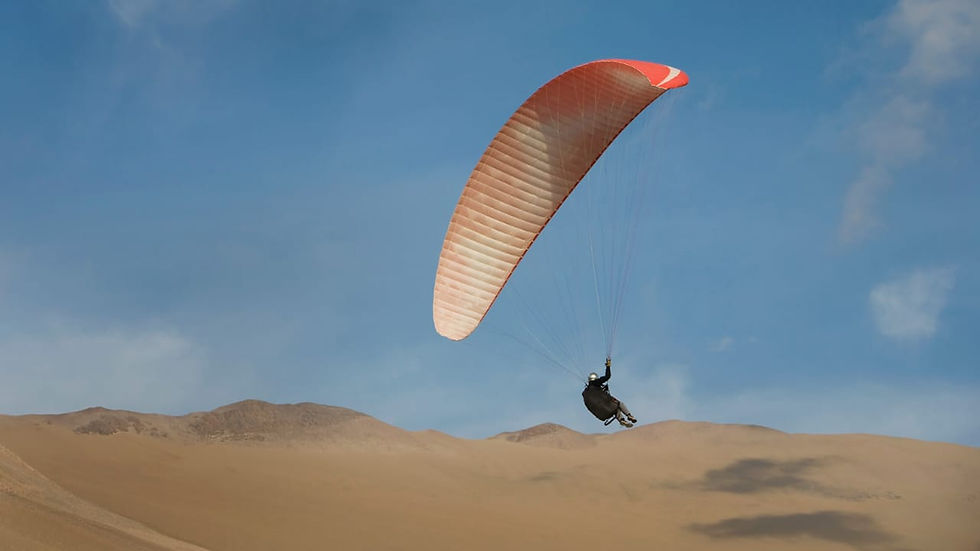How to Hold Down a Paraglider in Strong Wind: Expert Tips
- Rahul Panwar
- Oct 30, 2023
- 2 min read

Introduction: Paragliding is an exhilarating sport that allows individuals to experience the thrill of flying. However, when the wind is strong, controlling the glider becomes challenging. In this article, we will explore a proven method to hold down a paraglider in strong winds using rear risers and brake lines. These expert tips will help you keep your glider grounded and ensure a safer and more enjoyable flying experience. Important Details:
- When the wind is strong, holding down a paraglider can be tricky.
- Using rear risers and brake lines helps to break the back of the glider and make it easier to hold.
- Just using the rear risers is effective, but incorporating the brake line provides even better stability.
- Finding the sweet spot on your glider and adjusting your hand placement accordingly is crucial.
Methods to Hold Down a Paraglider:
When faced with strong winds, utilizing the following technique will greatly assist in keeping your paraglider grounded:
1. Rear Riser Technique:
- Begin by grabbing the rear riser and the brake line simultaneously. - This action breaks the back of the glider and offers more control. - By pulling the rear risers, you create tension that prevents the glider from inflating and lifting off. - Remember to maintain a slight brake pressure on the trailing edge for added stability. 2. Hand Positioning:
- Locate the top riser and underneath the riser on your glider. - It is easier to start with the bottom riser first. - Grab the rear lines and the brake line, ensuring a firm grip. - This method effectively breaks the back of the glider, making it easier to hold on the ground.
3. Finding the Sweet Spot:
- Experiment with hand placement to determine the most effective position for your glider and wind conditions.
- Too much tension can cause the trailing edge to flap and potentially re-inflate the glider.
- Strike a balance to securely hold the glider without compromising its stability.
Summary: When faced with strong winds, holding down a paraglider becomes crucial for safety reasons. Utilizing the rear riser technique, which involves grabbing the rear risers and brake line, will help break the back of the glider and provide better control.
Finding the sweet spot on your glider is essential for optimal stability. Remember to maintain a slight brake pressure on the trailing edge. By following these expert tips, you can ensure a safer and more enjoyable paragliding experience in challenging wind conditions.


Comments